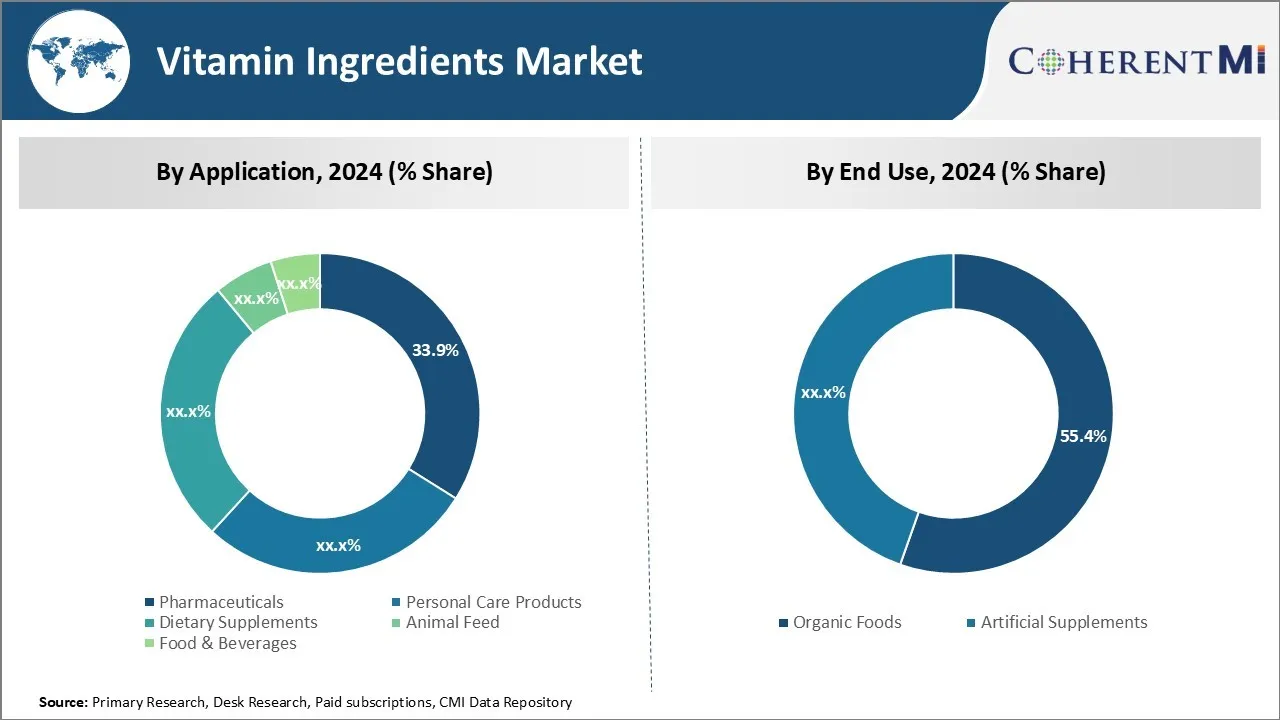Vitamin Ingredients Market Trends
Market Driver - Rising Awareness About Health and Wellness, Leading to Higher Demand for Vitamin-Based Dietary Supplements
With growing health consciousness among people, awareness pertaining to wellness and importance of good nutrition has increased tremendously over the past decade. People are recognizing that their lifestyles have become more sedentary and the food they consume lacks essential nutrients. This has compelled them to address deficiencies through targeted means such as dietary supplements. Vitamins make an indispensable part of their daily supplementation regime.
Individuals are actively seeking ways to boost immunity, reduce stress, enhance energy levels and look after overall well-being. While earlier supplements used to be considered only for elderly population or those falling ill, they are now adopted by youngsters as well as preventive healthcare measure. Continuous health information through various sources like internet, newspapers, magazines etc. has transformed people's thinking that vitamins can play a pivotal role even for healthy individuals to stay active, focused and perform optimally throughout the day. Besides, long working hours and erratic routines leave little time for preparing balanced diets, further elevating the dependence on vitamin supplements.
Women especially have increased uptake of supplements enriched with minerals and vitamins. Apart from basic multi-vitamins, they particularly choose those meant for bone health, hair & skin care, pre-post pregnancy requirements. Even among working professionals travel, erratic shifts impact their ability to maintain nutrition, prompting them to compensate through supplements. Market is witnessing surge in variants catering to gender, age and problem-specific needs. Understanding that regular supply of vitamins can promote wellness in long-run, consumers demonstrate readiness to pay premium prices for good quality products.
Market Driver - Increasing Prevalence of Chronic Diseases and Aging Population
Rising global chronic disease burden along with aging demographics in several regions are compelling factors driving steady demand for vitamins especially in pharmaceutical industry. Chronic illnesses such as diabetes, cardiovascular diseases, cancer have become much more common than before due to changing lifestyle, environmental pollution and other risks. Long-term management as well as prevention of such diseases rely heavily on micronutrients that body fails to manufacture on its own.
For example, vitamins C & E find extensive application in cancer treatment as powerful antioxidants to relieve side-effects of chemotherapy and radiotherapy. Vitamin B12, B6, folic acid are essential components of medications regulating blood sugar levels and circulation. Calcium, vitamin D, K are widely used in drugs for bone disorders like osteoporosis afflicting elderly. Realizing potential of vitamins in curing illnesses, R&D spending in pharma sector continues on innovative formulations, therapies involving specific micronutrients.
At the same time, proportion of geriatric demographic is swelling across regions resulting from improved healthcare and increased longevity. Age-related frailties cause nutrients absorption challenges for many. As body's requirement for vitamins also rises with advancing age, supplementation becomes fundamental requirement rather than option. This is evidenced through segment's sturdy sales of high-dosage vitamin supplements tailored for senior citizens suffering arthritis, eyesight deterioration, cognitive decline and more. Healthcare providers routinely advise vitamins consumption especially for those above 65 years of age. Thus, factors such as above create steady opportunities for vitamin ingredients within curative and preventive healthcare sphere.

Market Challenge - Volatility in Raw Material Prices, Which Increases Production Costs and Disrupts Supply Chains
One of the key challenges faced by players in the vitamin ingredients market is the volatility in raw material prices. Vitamin ingredients are derived from natural sources such as fruits and vegetables. The prices of these raw materials are dependent on various factors like crop yields, climatic conditions, supply-demand dynamics etc. Any fluctuations in the prices of raw materials can have a significant impact on the production costs of vitamin ingredient manufacturers. Higher raw material costs often force companies to gradually pass on these increases to customers in the form of increased product prices. This price volatility makes it difficult for manufacturers to fix stable prices over longer periods of time. It also disrupts the supply chain as manufacturers may face shortages or surpluses due to unpredictable raw material availability and pricing. Maintaining adequate inventory levels poses operational challenges. The frequent fluctuations in input costs can squeeze profit margins for companies. To counter this risk, manufacturers may look to diversify their raw material sourcing regions and establish long term supply contracts. However, volatility in commodity prices continues to be a major risk faced by the industry.
Market Opportunity - Innovations in Manufacturing Techniques to Encourage Development of Novel Opportunities
The vitamin ingredients market is now witnessing new opportunities arising from technological innovations in manufacturing processes. One such promising innovation is the development of lab-grown or cultured nutrients. Just as lab-grown meat is gaining acceptance, companies are exploring ways to cultivate vitamin compounds artificially under controlled conditions. This offers the ability to produce high-quality, sustainable and consistent vitamin ingredients without reliance on agricultural raw materials. Such cultured nutrients can overcome issues of seasonal availability and quality variations associated with plant and animal sources. The manufacturing process also allows greater customization of vitamin profiles as per consumer needs. With advancements in fermentation and cell culture technologies, lab-grown vitamin production is becoming commercially viable. It paves the way for new business models focused on nutrition rather than agricultural commodities. Companies investing in innovative techniques will be well-positioned to tap new markets and application segments like personalized nutrition with consistent, customizable formulations. Overall, these innovations are opening up promising avenues for the future growth of the vitamin ingredients industry.